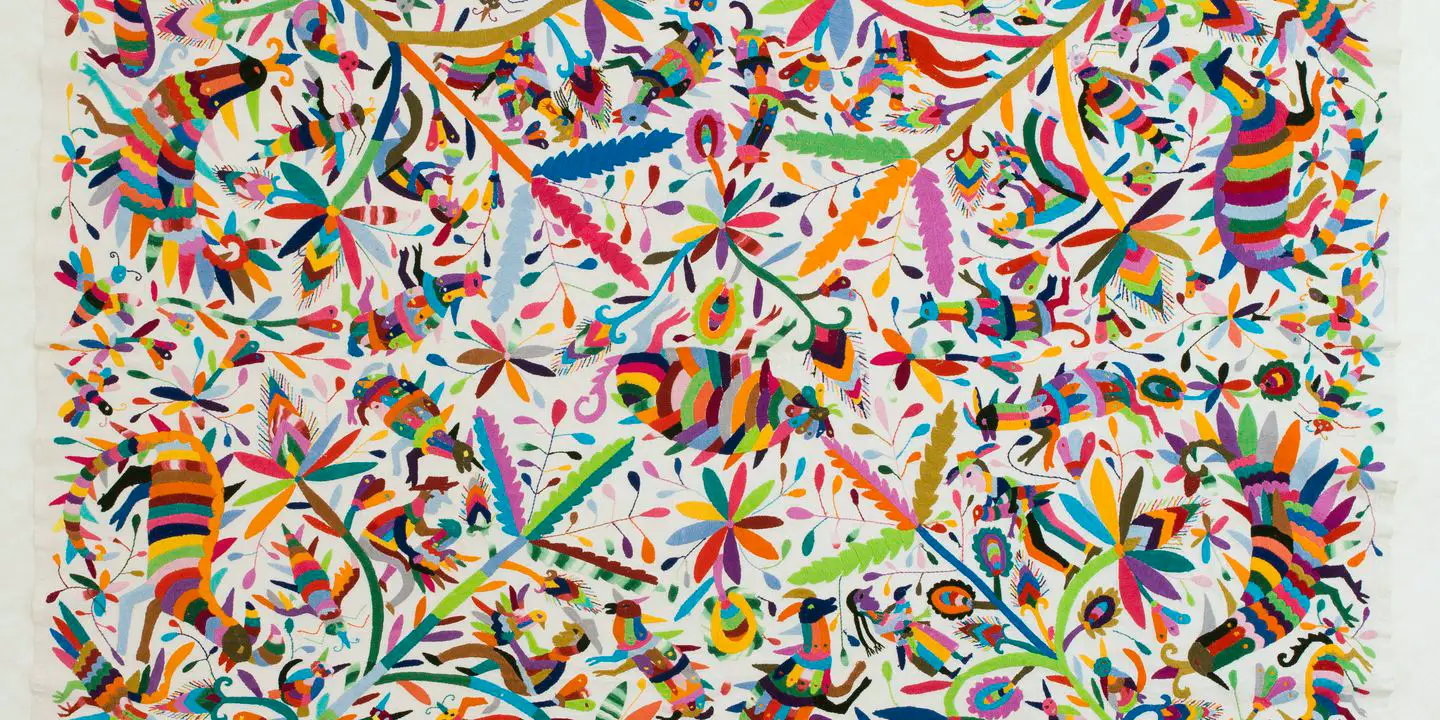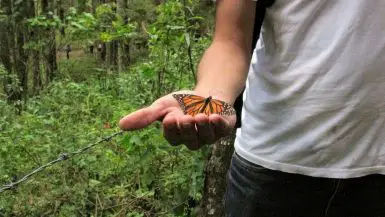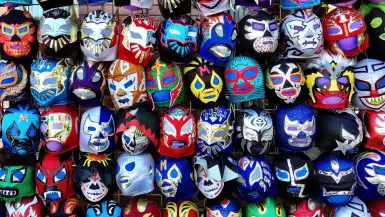I’m putting together a series on design trends! I love learning about the history of trends and exploring the folk art that often serves as the inspiration. This week I’ve been reading about Otomi embroidery.
As someone in the US, I often see trends come and go without any explanation of the people or places they came from. We are very guilty as designers of cultural appropriation and marketing the crap out of ancient art styles and traditions. Here’s my little homage to the people who made all of this possible.
Who are the Otomi people?
The indigenous Otomi people, also known as Ñuhu or Hñähñu depending on their dialect, live in the central Mexican altiplano region in the highlands and valleys. Otomi people can be found mainly in Hidalgo, but can also be found in EdoMex, Querétaro, Puebla, Veracruz, San Luis Potosí, Guanajuato, Tlaxcala, and Michoacán.
The Otomi culture is one of the older complex Mesoamerican cultures, and lived peacefully near the Olmecs until the Nahua arrived around 1000 BCE.
There are four main languages spoken by the Otomi that are all generally referred to as Otomi, and all four branches share similar cultural practices. Around 300,000 Otomi live in Mexico today, most speaking Spanish but many of them still keeping the Otomi dialects alive.
What is Otomi Embroidery?
The Otomi textiles, also known as tenangos take weeks or even years for the women to embroider, and are said to be based off of cliff painting in the Tepehua-Otomi mountains in the area. Some say that they may be also inspired by cave paintings in the Mexican Plateau area.
While some of the shapes tend to be more abstract, most of them are based on motifs that can date back to hundreds of years ago.
How is Otomi Embroidery made?

The embroidery as we know it didn’t begin in its modern form until a few hundred years ago, although the Otomi used embroidery techniques pre-colonization. As time progressed and the Otomi were colonized by Spaniards, the Otomi women began to embroider in the European style, a popular craft for women during colonial times.
The craft really began to kick into high gear in the 1960s, when a famine and economic crisis forced the Otomi to turn to traditional crafts for methods of making money. The main differentiator of the commercial craft is the use of white cotton cloth.
Otomi women trace designs on the white cotton with a pencil, creating balanced designs, either asymmetrical or symmetrical. The designs are embroidered with a special kind of satin stitch that only appears on one side of the cloth.
Motifs & symbols
The symbols and patterns on Otomi embroidery and cutouts can be traced back to prehistoric roots in the area. Symbols range from animals and plants native to the Tenango area, abstract designs, people, and mythological creatures.
A video featuring an artisan penciling the initial design:
Common motifs are animals, thought to be bearers of important news, and four- and eight-pointed stars intended to represent the cardinal direction. Other symbols may represent fertility, nature, helpful spirits, harmful spirits, or spirits that serve as intermediaries between our world and that of the spirits.
Here is a link of Otomi symbolism in the amate paper cutouts, which can often be seen in the embroidered designs as well.
Where can I find Otomi Embroidery?

Tenango de Doria in the state of Hidalgo is the most famous municipality to buy this kind of embroidery, as this is where the style was first commercialized. It is estimated that about 1200 craftsfolk practice this art today in the region.
You can also find Otomi fabrics in most tianguis (craft markets) in large cities such as Distrito Federal.
Generally speaking, these textiles should set you back a pretty penny for the real thing, but $200 too much to ask for several months worth of hand embroidery?
I suppose you could get a knockoff at a store like Anthropologie, but this art may die out without support from foreigners and visitors. It’s all up to you and your conscience.
If you search on Etsy for the fabric, you should generally be able to tell the real thing from fakers. The price point is a main difference, as well as the quality of the stitching.
It is also important to source Otomi fabric from an ethical supplier, as many children may be employed making these clothes at-less-than scrupulous suppliers. Make sure you buy from an ethical source if you can check somehow!
Otomi on Ebay:
Otomi shops on Etsy:
SanPanchos – Amate paper (inspiration behind the embroidery designs)
Otomi inspired:
Sources:
http://www.casadolores.org/mexico-dreams-animals.html
https://en.wikipedia.org/wiki/Otomi_people
https://en.wikipedia.org/wiki/Tenango_embroidery
Pin it:

Post contains affiliate links.






Great and well detailed ! 🙂
[…] The artisan markets are full of wonderful crafts too. I brought home a lovely blackwork Otomi embroidery like in the right-hand photo above, which I’m going to hang on the wall. You can read a bit more about Otomi’s history and how it’s made here. […]
[…] on the other end of the finger-pointing. Whether it be Malian mud cloth, Cameroonian Juju hats, or Otomi embroidery, other people’s cultures are not “trends” for you decide are […]
Otomi Mexico store has a real Tenangos and all of them are so beautiful that is difficult to select which one to buy. They included a small gift that I love it! http://www.otomimexico.com
[…] Wondrous Paths, 2017. https://wondrouspaths.com/history-otomi-embroidery-patterns/ […]
I have some Otomi embroidered patches of animals I found among my sisters treasures when she passed recently. She visited parts of Mexico often and I’m quite sure they are authentic. There are 12 animals, one on each patch. I’m trying to research any symbolism of each animal. Any direction you can provide?
Hi Linda, I’m sorry to hear about your sister. I would try to research people who directly supply this, such as the sellers listed in this article or other sellers on Etsy and ask them to interpret for you. They have a more direct connection with the indigenous communities.
[…] https://wondrouspaths.com/history-otomi-embroidery-patterns/ […]
[…] is it okay for you to wear a Mexican embroidered dress, practice the art of smudging, or display Otomi art in your home? Yes, but only if you purchase said pieces from a Mexican designer, artist, or […]